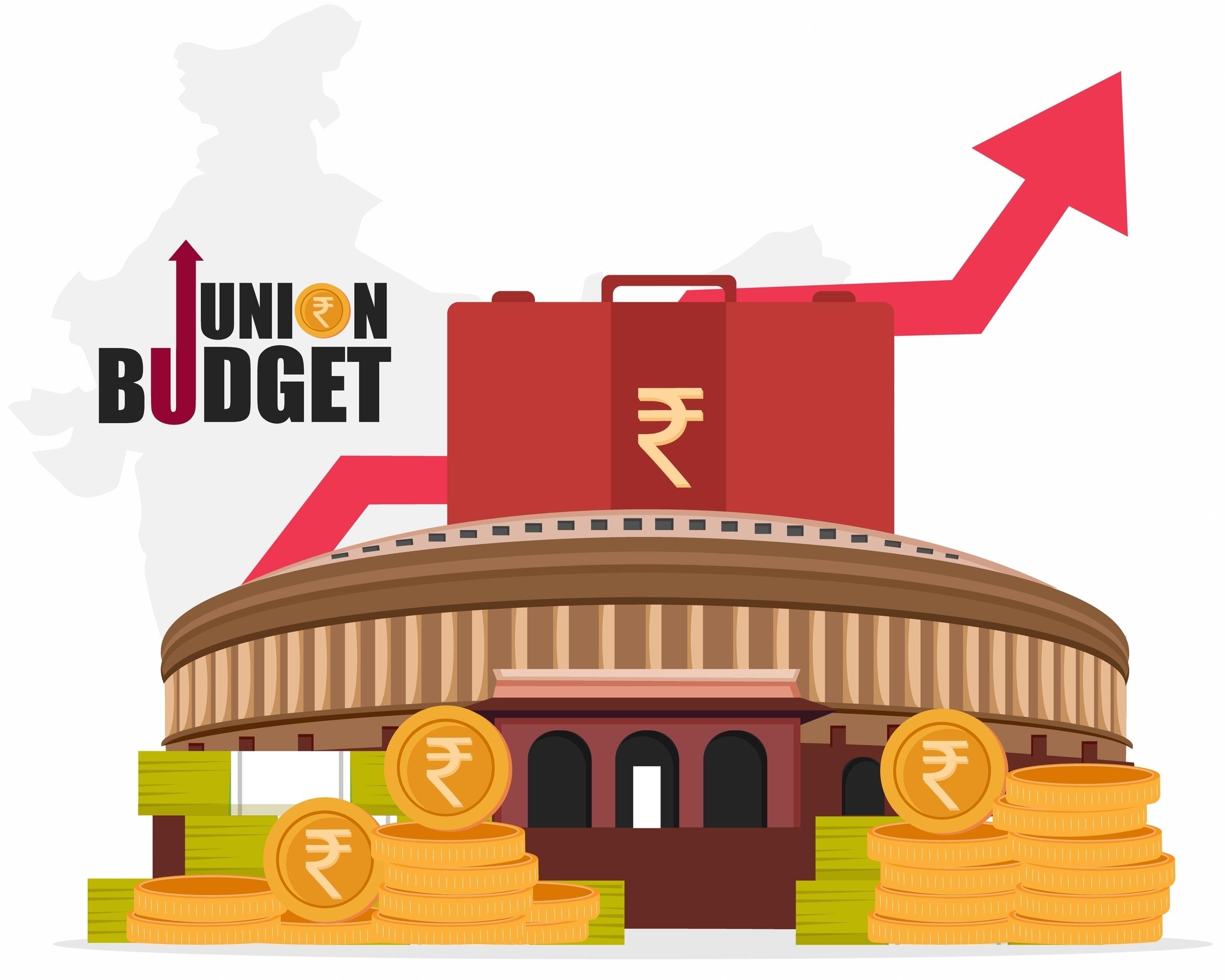Finance Minister Nirmala Sitharaman presented the Union Budget 2025 on February 1. The budget introduced a mix of reforms, tax adjustments, and sector-specific announcements aimed at boosting demand, attracting investments, and promoting job creation. The Finance Minister announced budget is dedicated to accelerating growth, driven by aspirations for a 'Viksit Bharat.' Nirmala Sitharaman said the budget aims at 'transformative' reforms in 6 areas including taxation, financial sector, power sector, urban development, mining and regulatory reforms. The budget is expected to stimulate economic expansion, enhance infrastructure, improve governance, and promote sustainable development across multiple sectors.
Sectors like insurance, infrastructure, and electric vehicles (EVs) are particularly set to see a boost after the union budget. In this article, we'll break down the major announcements in the union budget of India for 2025 and their impact on different sectors of the economy.
Impact of Union Budget on the Indian Economy
The United Nations forecasted an impressive growth for the Indian economy at 6.6% in 2025 and 6.8% in 2026. The union budget 2025 will support this growth trajectory through strategic reforms, positioning the nation as a key player in the global economy. Let's look at the union budget's impact on some major sectors:
1. Insurance Sector
In the budget announcement, FM Nirmala Sitharaman announced an increase in Foreign Direct Investment (FDI) limits for the insurance sector from 74% to 100%. This is aimed to attract more foreign capital. The enhanced limit will be available to insurance companies that invest the entire premium in India.
These measures will improve insurance penetration in the country, making it more accessible to a wider population. This also aligns with the government's vision of Insurance for All by 2047, which aims to ensure appropriate life, health, and property insurance coverage for every citizen.
2. Infrastructure Sector
The infrastructure sector is key to the Indian economy. The Finance Minister's budget speech highlighted continued investments in the industry to fuel long-term growth. The government will provide ₹1.5 lakh crore in interest-free loans for capital expenditure and offer incentives to encourage reforms. A 1 lakh crore Urban Challenge Fund is being created to transform cities into growth hubs, support innovative redevelopment, and improve water and sanitation infrastructure.
These initiatives are expected to drive growth and create jobs in the infrastructure sector. The government also plans to boost connectivity and enhance supply chains by improving urban and rural infrastructure. Moreover, the additional capital influx aligns with the government's commitment to the National Infrastructure Pipeline (NIP).
3. Auto Sector
In the Union Budget 2025, FM Nirmala Sitharaman announced several key measures to boost the growth of the country's rapidly evolving auto sector that has spread cheer. Financial Minister Sitharaman proposed to add 35 additional capital goods for EV Battery manufacturing and 28 additional capital goods for mobile phone battery production. This will host domestic manufacture of lithium-ion batteries in the nation, according to Sitharaman. Exemption of BCD on several capital goods required for manufacturing electric vehicle batteries will be brought down as well.
With these initiatives, the government is focusing on boosting the production of electric vehicles and manufacturing auto parts locally. These developments will further make vehicles more affordable and accessible to Indian consumers, increasing demand, particularly in Tier 2 and Tier 3 cities. Other measures like tax relief and increased capital infusion in rural schemes like MGNREGA can increase consumer disposable income, potentially boosting demand for the automobile sector.
4. Banking Sector
FM Sitharaman introduced several measures in the union budget to strengthen the Indian banking sector. PM SVANidhi to be revamped with enhanced loans from banks, UPI linked credit cards and capacity building support. The scheme will be revamped with enhanced loans from banks, UPI linked credit cards with INR 30,000 limit, and capacity building support. The services of India Post Payment Bank will be deepened and expanded in rural areas.
These initiatives come when the country's banking system is showing signs of stability, with gross NPAs hitting a 12-year low of 2.6% in 2024. The provisions are expected to enhance credit flow in the banking system and support industries like cement and metals through capital expenditure initiatives and housing development programs.
5. Consumer Sector
India is expected to become the third-largest consumer market globally by 2026. To further boost the purchasing power of consumers and encourage spending, FM Sitharaman announced significant measures like reducing tax burden, that would put more money back into consumers’ hands.
Tax relief for lower and middle-income groups and adjustments in indirect taxation can give a push to the country's consumer sector. Policy changes around excise duties and import tariffs can also enhance affordability and demand across other key industries. These measures are aimed at boosting consumption and driving economic growth.
6. Pharma and Healthcare Sector
Key updates for the healthcare and pharmaceutical sectors;
- The government has allocated ₹99,858.56 crore for developing, maintaining and improving the country’s healthcare system, a 9.78% increase from ₹90,958.63 crore in FY25.
- The government has allocated ₹4,200 crore for the Pradhan Mantri Ayushman Bharat Health Infrastructure Mission (PMABHIM). The government has allocated ₹2,445 crore for PLI for the pharmaceutical industry. Ayushman Bharat Pradhan Mantri Jan Arogya Yojana (AB PM-JAY) was allocated ₹9,406 crore.
- The budget allocated ₹37,226.92 crore crore to the National Health Mission (NHM). The National Tele Mental Health Programme was allocated ₹79.6 crore.
- The Union Budget All India Institute of Medical Sciences (AIIMS), Delhi, was increased to ₹5,200 crore.
- Nirmala Sitharaman said the government will establish 200 cancer centres in 2025-26.
- 10000 additional seats will be added in medical colleges and hospitals towards the goal of adding 75,000 seats in the next five years.
With the Indian healthcare sector targeting $320 billion by 2028, these measures can help drive growth by prioritizing research and development. The 'Heal in India' initiative, coupled with a ₹20,000 crore allocation for tourism, would aim to reinforce India's position as a global hub for affordable and high-quality medical care. The initiatives will also make healthcare more affordable and accessible to the public, strengthen the country's medical infrastructure, promote medical tourism and drive innovation in critical areas like drug development and medical technology.
To sum up
The Union Budget 2025 has introduced several measures to drive growth across sectors. From strengthening the infrastructure to making healthcare and insurance more accessible, these initiatives aim to support the country's economic development.
If you want to leverage these developments by investing in real estate, buying a new vehicle, or expanding your business, Tata Capital Moneyfy is here to help. Visit the Tata Capital Moneyfy website or download the App now.
Popular Searches
Learn Center
Mutual Fund Investment
Calculators
FAQs
Budget 2025 can be best described as a balanced one. It offers significant relief to India’s middle-class population by relaxing income tax norms. At the same time, it emphasizes infrastructure development and reducing the fiscal deficit. Sectors such as insurance, real estate, automobile, banking, and healthcare are poised to benefit immensely from the budget announcements.
Budget 2025 brings significant relief for consumers by reducing or abolishing customs and import duties on several items. Below is the list of items getting cheaper:
- Electronic and mobile devices, such as smartphones, LED/LCD TVs, etc.
- Electric Vehicles (EVs)
- Life-saving drugs and medical equipment
- Imported seafood
- Leather and ship-building materials
- Knitted fabrics
Below are the top sectors poised for growth after Budget 2025:
- Agriculture
- Power and renewable energy
- Tourism and hospitality
- Infrastructure, real estate, and urban development
- Insurance and banking
- Automobile
- Pharma and healthcare
- Technology, AI, and semiconductors
- Consumption and FMCG
- Shipping and logistics
 6 mins read
6 mins read
 Previous Post
Previous Post



















